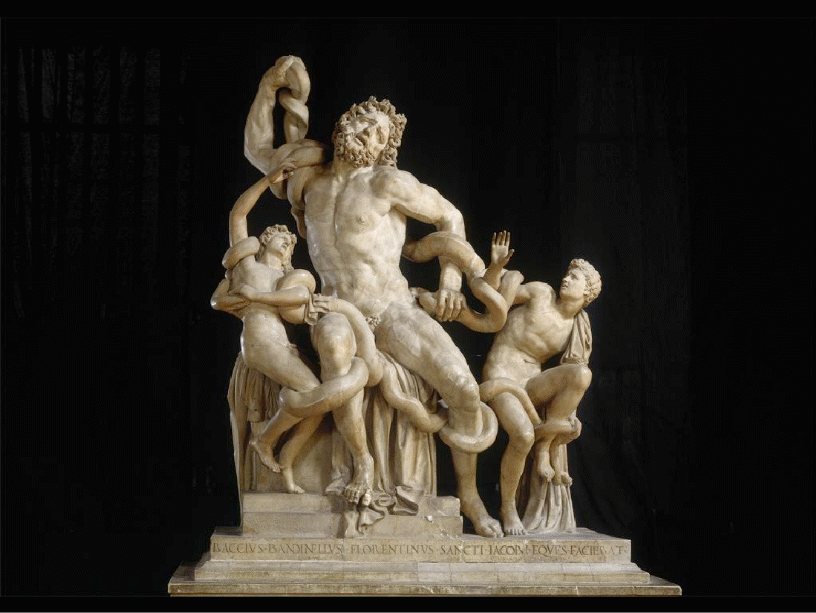Laocoon and His Sons, or the Laocoön Group, is a monumental statue that was supposedly created in Greece in the Hellenistic Period. The author remains unknown; however, the sculpture represents the finest piece of the Hellenistic Baroque. It is made of white marble and has a height of approximately 213 cm. One could also notice that the Laocoön Group has seven interlocking parts of white marble. Scientists assume that the statue has its subject derived from a play by Sophocles that existed in ancient Greece. In this Laocoon and His Sons sculpture analysis, you will learn the history of the old masterpiece and discover an excellent example of an artwork descriptive essay.
The sculpture entails Laocoon the Trojan priest and his two sons identified as thymbraeus and Antiphanters. One can suggestively discern from the statue that Laocoon and his sons were being strangled by monstrous sea snakes. Ideally, the art work conveys the feeling of physical suffering experienced by the victims in the process of rescuing themselves from the serpents.

The statue is made in Hellenistic style which depicts the emotional nature of the artist. In this case, the freely spaced figures of the statue ideally portrays the nature of the artist’s emotions and free flowing passion of exploring themes on ancient Greek culture such as misery and pain.
Evidence can be derived from the fact that Laocoon has his forehead wrinkled and his eyes half shut, a sign of agony. On the whole statue, one can analyze that there is no single point in the scripture that is free from torment and pain.
From my own analysis, I have been captured by the marvelous techniques applied by the artist in drawing the audience’s attention to the sculpture. What makes the statue stunning is how Laocoon’s head appear cocked on one side with his eyes looking up to the sky. Moreover, the manner in which his eye brows appear furrowed, mouth open and disarrayed hair produce a baroque effect.
The foreground of the statue gives the sculpture a form of endearing outlook where audience can derive expressive meaning from its baroque nature. For instance, all the parts such as forehead, hands, shoulders, legs, heals and hips twists in different direction. This is a classical style in art that is meant to associate unstable forces and emotions with actions.
Therefore, from the foreground, the audience can be able to tell the story even without instructions since the arrangement of the figures is able to produce a turbulent flow of thoughts. Besides, the background of the statue is insightfully and well set such that it provides the audience with intricate details of the action and emotion resulting from the agony of defeat.
Anesthetically, the statue is inspirational to other artists of the time and in present due to the fact that it has maintained its significance. Moreover, the use of white color and the arrangement of the figures retain the anesthetic value of the statue without interfering with the physical expression of pain and agony.
To recap it all, the statue contains an intense dramatization of laocoon and his son as they struggle to entangle themselves from the monstrous sea serpents. In this case, the statue appears realistic in the sense that the expression of such figures illustrates agonies that can befall man in real life situation. Additionally, the artist intentionally draws the audience’s concentration to observe the three figures as he has deliberately entangled them with the serpent.
In this case, the statute emerges as evocative in the attempt to warn the audience on the dangers that men face and to some extent such forces defeat them. This goes without saying that The Laocoon and his sons has emerged as one of the most inspirational work of art during the renaissance era. This is due to the natural, realistic and anesthetics nature of the statue.